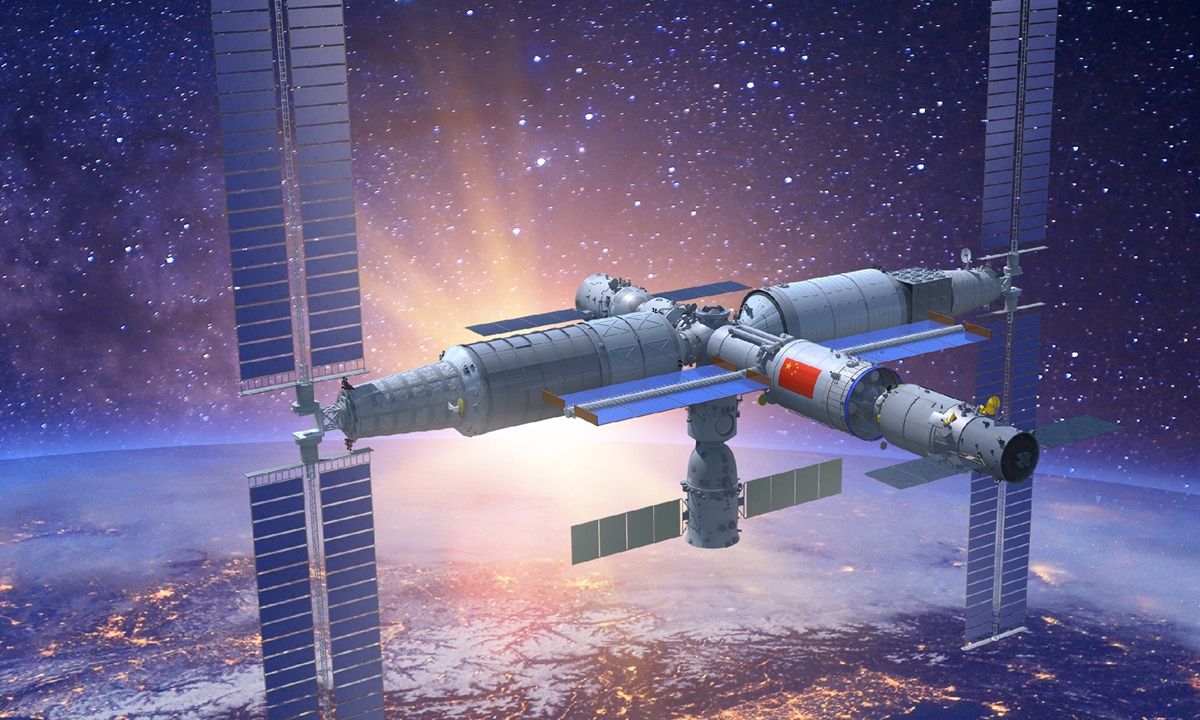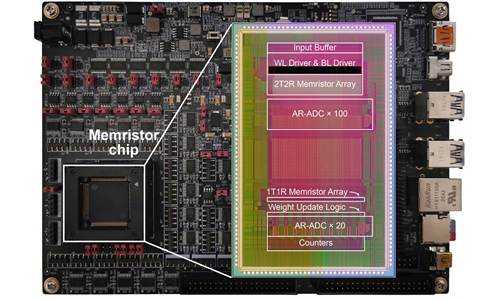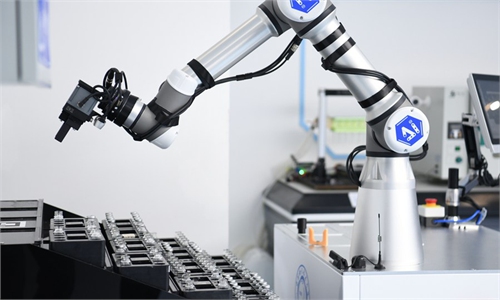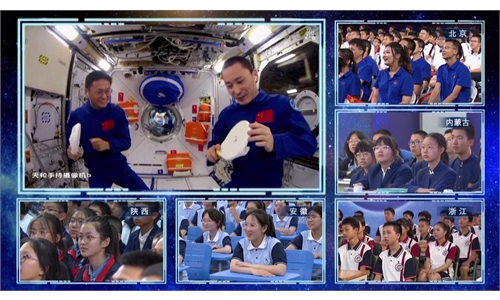China ought to expand broader applications of space technology innovations, fend off space challenges

File photo
China is set to ramp up research and development into advanced space technology that will boost the country's economy and national security. The country's lunar mission to bring back the first samples ever collected from the moon's far side is on schedule in 2024, and it is also planning to send Chinese astronauts to the moon by 2030 and build an international lunar research station there.In the past decades, China's space endeavors have achieved splendid results, with major programs including China's independently-run manned space station called Tiangong, the Beidou Navigation Satellite System, Chinese lunar and Mars exploration programs and more.
A recent document released by the country's space-related authorities says the mission of China's space program is to explore outer space to expand humanity's understanding of the earth and the cosmos; to facilitate global consensus on the shared responsibility in utilizing outer space for peaceful purposes and safeguarding its security for the benefit of all humanity; to meet the demands of economic, scientific and technological development, national security and social progress; and to raise the scientific and cultural levels of the Chinese people, protect China's national rights and interests, and build up China's overall strength.
The country's space efforts will inevitably strengthen its space presence in an all-round manner - to enhance the capacity to better understand, freely access, efficiently use, and effectively manage outer space, to lead self-reliance and self-improvement in science and technology, promote high-quality economic and social development, and better defend its national security. To explore the vast cosmos, develop the space industry and build China into a space power is the ultimate goal.
China's space industry serves its major strategic needs and targets cutting-edge technology that leads the world.
Spearheaded by the major space projects, the country has accelerated research into core technologies, stepped up their application and redoubled efforts to develop advanced and innovational space systems. As a result, the country's capacity to enter and return from space, and its ability to engage in space exploration, utilization and governance have grown significantly in the past 10 years.
Since 2016, China's space industry has made marked progress, as manifested by a steady improvement in space infrastructure, the completion and operation of the globally-leading Beidou Navigation Satellite System, the completion of the high-resolution earth observation system, steady improvement of the service ability of satellite communications and broadcasting, the conclusion of the last step of the three-step lunar exploration program (orbit, land, and return), and the completion in building China's own space station.
The Tianwen-1 Mars probe orbited and landed on Mars, the Zhurong Mars rover explored the planet and left China's first mark in the planet, which enabled China to achieve a leap from cislunar to interplanetary exploration. And, the space-based section of the China High-resolution Earth Observation System has largely completed, enabling high-spatial-resolution, high-temporal-resolution and high-spectrum-resolution earth observation.
Also, China's ability to observe the global atmosphere has made strides. Its new-generation Fengyun-4A/4B meteorological satellites in the geostationary orbit are able to perform all-weather, precise and uninterrupted atmospheric monitoring and disaster monitoring. The successful launches of Fengyun-3D/3E satellites enable coordinated morning, afternoon and twilight monitoring, and the Fengyun-2H satellite provides monitoring services for countries and regions participating in the Belt and Road Initiative.
The completion and operation of the 30-satellite Beidou Navigation Satellite System represents the successful conclusion of the system's three-step strategy and its capacity to serve the world. Beidou's world-leading services include positioning, navigation, timing, regional and global short-message communication, global search and rescue, ground-based and satellite-based augmentation, and precise point positioning.
In the next five years, China will integrate space science, technology and applications while pursuing the new development philosophy, building a new development model and meeting the requirements for high-quality development. All this sets the bedrock for a new journey towards becoming a space power.
The Long March carrier rockets are being upgraded towards non-toxic and pollution-free launch, and they are becoming smarter boosted by modular technology. The Long March-5 and Long March-5B carrier rockets have been employed for regular launches; Long March-8 and Long March-7A have made their maiden flights, with increased payload capacity. The Long March-11 carrier rocket has achieved commercial launch from the sea; the Smart Dragon-1, Kuaizhou-1A, Hyperbola-1, CERES-1 and other commercial vehicles have been successfully launched; successful demonstration flight tests on reusable launch vehicles have been carried out.
In the next five years, China will continue to improve the capacity and performance of its space transport system, and move faster to upgrade launch vehicles. It will further expand the launch vehicle family, send into space new-generation manned carrier rockets and high-thrust solid-fuel carrier rockets, and speed up the R&D of heavy-lift launch vehicles.
Now, preparations for the next planned lunar mission, known as the Chang'e-6, are progressing smoothly, China's National Space Administration said in a statement recently, adding that the mission's accompanying relay satellite will be deployed in early 2024. The space administration also looked ahead to the Chang'e-8 mission slated for 2028, with Chinese space officials calling for increased global collaboration for unmanned lunar expedition, especially between friendly countries of China.
It means China and international partners could work together on spacecraft launch and orbit operation, conduct spacecraft-to-spacecraft interactions and cooperation, and jointly explore the surface of the moon. For example, the spacecraft will make room for 200 kilograms of foreign science payloads, the administration said. This could allow overseas partners to conduct lunar research by piggybacking off the mission.
China expects both upcoming missions, and the Chang'e-7 slated for 2026, to produce valuable data toward constructing a permanent international research station on the lunar south pole by 2040 - part of Beijing's wider push to become a major space power.
Those efforts have seen China become the first country to send a rover to the far side of the moon in 2019, complete construction of its orbital Tiangong space station last year, and announce plans to become only the second country to land a manned mission on the moon by 2030.
Beijing's Chang'e-6 mission next year will deepen understanding of the moon's far side, collecting samples following 10 previous missions to the near side facing Earth, the space administration said. The spacecraft is slated to touch down in the far side's South Pole-Aitken Basin and collect dust and rock samples there. China has launched five robotic probes since 2007. Its last mission -- Chang'e-5, landed on the moon in December 2020 and returned with samples of lunar rocks and soil.
China will continue to step up efforts to become a "global center for talent and innovation in space science", and create favorable conditions for the development of space professionals. It will improve the personnel training mechanism - fostering a pool of strategic scientists, leading and young scientists and teams with strong innovation capacity, and cultivating a large number of outstanding engineers, top technicians and visionary entrepreneurs.
The author is an editor with the Global Times. bizopinion@globaltimes.com.cn



